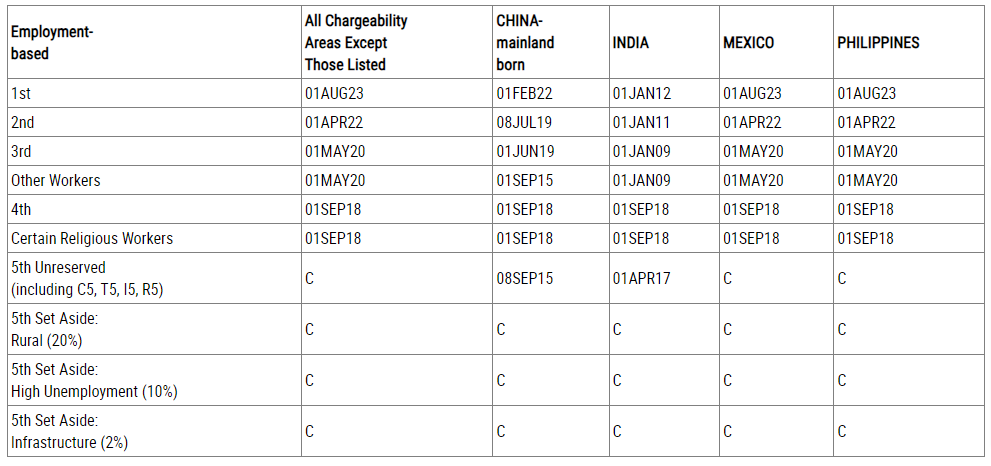Emergencies or Unforeseen Circumstances
Unforeseen circumstances, such as natural catastrophes (hurricanes, wildfires, severe weather, etc.), national emergencies (public health emergencies), severe illness, or conflicts abroad, can sometimes affect the processing of your USCIS application, petition, or immigration request. USCIS has discretion to take the below measures on a case-by-case basis upon request, if you have been affected by an unforeseen circumstance. You can request assistance by calling the USCIS Contact Center at 800-375-5283. In order to request an expedite through the Contact Center, you must have already filed a benefit request and have a USCIS receipt number. When you request help, you will need to explain how the impact of an unforeseen circumstance (domestic or international) created a need for the requested assistance. For example, if you lost all evidence of status or employment authorization, include an explanation in your description and a copy of a police report, insurance claim, or other report, if available, to support your request. Always keep your address up-to-date with USCIS to ensure you receive all correspondence and benefits from us in a timely manner and avoid possible delays related to your case. To update your address with USCIS, visit How to Change Your Address page of USCIS.gov. Note that changing your address with the U.S. Postal Service (USPS) will not change your address with USCIS. Please contact USPS if you need to temporarily hold or forward your mail due to unforeseen circumstances or a temporary relocation. Specific Requests Expedited Processing If you need USCIS to consider your request for a service or benefit more quickly, you may make that request when filing or after you file. In order to request an expedite through the Contact Center, you must have already filed a benefit request and have a receipt number. Read more about expedited processing on our website. Extensions and Changes You may request an extension of stay or change of status using Form I-539, Application to Extend/Change Nonimmigrant Status, or in the case of certain employment-based classifications, Form I-129, Petition for a Nonimmigrant Worker. If an unforeseen circumstance prevented your planned and timely departure, you may extend or change your status and provide an explanation for your failure to depart. If you do not apply for the extension or change of status before your authorized period of admission expires, USCIS may excuse the delay if it was due to extraordinary circumstances beyond your control. Fee Waivers If you are unable to pay the fee for a USCIS service or benefit, you may request a fee waiver for certain forms by filing Form I-912, Request for Fee Waiver. Document Replacement You may also request expedited processing for the replacement of lost or damaged immigration documents, such as your Green Card, your Employment Authorization Document (EAD), or Form I-94, Arrival/Departure Record. If your documents were lost, stolen, or damaged, and you need proof of employment eligibility, see the list of Form I-9 acceptable documents and receipts for other ways to complete Form I-9. Visit I-9 Central for more information. To replace a/n… You must file a… Green Card Form I-90, Application to Replace Permanent Residence Card, or request interim evidence of permanent residence stamp (I-551 stamp) from a USCIS Field Office.You may file Form I-90 online. Form I-94 Form I-102, Application for Replacement/Initial Nonimmigrant Arrival-Departure Document Employment Authorization Document Form I-765, Application for Employment Authorization Employment Authorization Employees If your documents were lost, stolen, or damaged, see the list of Form I-9 acceptable documents and receipts for more information on other ways to complete Form I-9. Visit I-9 Central for more information. To replace an Employment Authorization Document (EAD), you must file Form I-765, Application for Employment Authorization. You may also request expedited processing for the replacement of a lost or damaged EAD. Employers All requirements for Form I-9, Employment Eligibility Verification, completion and E- Verify remain in place. E-Verify remains available to employers affected by unforeseen circumstances, both directly through the E-Verify web portal and E-Verify employer agents. If you have any questions or issues about using E-Verify from a remote location, please contact E-Verify Support at 888-464-4218 (for employers) or 888-897-7781 (for employees). Severe Economic Hardship to F-1 Students Caused by Unforeseen Circumstances If you experience severe economic hardship because of unforeseen circumstances beyond your control, you may request employment authorization to work off-campus (if you meet certain regulatory requirements). See 8 CFR 214.2(f)(9). Examples of unforeseen circumstances include (but are not limited to): To apply, you must submit Form I-765, Application for Employment Authorization, along with a copy of your Form I-20, Certificate of Eligibility for Nonimmigrant Student Status, and any other supporting materials to USCIS. Your Form I-20 must include the employment page completed by your Designated School Official, certifying your eligibility for off-campus employment due to severe economic hardship caused by unforeseen circumstances beyond your control. If your request is approved, you may be able to work off-campus in one-year intervals up to the expected date of completion of your current course of study. See 8 CFR 214.2(f)(9)(ii). Special Student Relief Special Student Relief (SSR) is the suspension of certain regulatory requirements by the secretary of Homeland Security for F‑1 students from parts of the world that are experiencing emergent circumstances. Examples of emergent circumstances include natural catastrophe, war and military conflicts, and national or international financial crises. DHS designates SSR by publication of a Federal Register notice, which provides the start and end dates of the suspension of those requirements, which may include any or all requirements for on-campus or off-campus employment. A list of active SSR notices is available on the ICE Student and Exchange Visitor Program What’s New webpage. You may be eligible to apply for off-campus employment authorization if you: To apply, you must submit Form I-765, Application for Employment Authorization, along with a copy of your Form I-20, Certificate of Eligibility for Nonimmigrant Student Status, and any other supporting materials to USCIS. Failure to Appear for an Interview or to Respond to a Request for Evidence If you did … Read more





